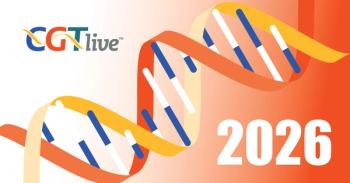
Enhanced Lymphodepletion Regimen Improves ORR in Patients Receiving Wugen’s CAR-T WU-CART-007 for T-Cell Malignancy
On the other hand, enhanced lymphodepletion increased incidence and severity of CRS and infection.
Wugen’s WU-CART-007, an investigational allogeneic CD7-directed chimeric antigen receptor T-cell (CAR-T) therapy intended to treat relapsed/refractory (r/r) T-cell acute lymphoblastic leukemia (T-ALL) and r/r T-cell lymphoblastic lymphoma (T-LBL), has demonstrated improved overall response rates (ORR) in patients who received an enhanced lymphodepletion (eLD) regimen prior to treatment as opposed to a standard lymphodepletion (sLD) regimen. The data comes from a phase 1/2 clinical trial (NCT04984356) and were presented at
Thirteen of the 28 patients treated in the study received the eLD regimen, which consisted of 30 mg/m2/day of fludarabine administered at Days –6, -5, -4, and –3 and 1000 mg/m2/day of cyclophosphamide at Days –5, -4, and –3. All patients who received the eLD regimen were treated with 900x106 cells of WU-CART-007, which constituted dose level 4 (DL4) in the study and the recommended phase 2 dose. For 11 of these 13 patients who were evaluated for ORR, the ORR was 91% (10/11). In comparison, 3 patients who had received the sLD regimen, which consisted of 30 mg/m2/day of fludarabine administered at days -5, -4, and –3 and 500 mg/m2/day of cyclophosphamide at days –5, -4, and –3, and were treated with
On the other hand, the incidence and severity of certain adverse events (AEs) were higher in patients who received the eLD rather than the sLD. The AE data also included patients who had received the sLD and either DL1 (100x106 cells, n = 3), DL2 (300x106 cells, n = 3), or DL3 (600x106 cells, n = 6) of WU-CART-007. Among the 15 patients in the overall sLD group, 10 patients (66.6%) experienced cases of grade 1-2 cytokine release syndrome (CRS) and 1 patient (6.6%) experienced a grade 3 or greater case of CRS. Meanwhile, among the 13 patients who received the eLD, 9 patients (69%) experienced grade 1-2 cases of CRS and 4 patients (31%) experienced grade 3 or greater cases of CRS. Furthermore, in the sLD group, only 1 patient (6.6%) experienced a grade 1-2 case of COVID-19 and 1 patient (6.6%) experienced grade 3 or greater cases of periorbital cellulitis and encephalopathy due to mucor infection. In the eLD group, 4 patients (31%) experienced grade 1-2 infections and 6 patients (46.2%) experienced grade 3 or greater infections. Grade 1-2 infections included bacteremia in 3 patients (231%), cytomegalovirus infection reactivation in 2 patients (15.4%), C-Difficile infection in 1 patient (7.7%), Epstein-Barr viraemia in 1 patient (7.7%), polyomavirus viraemia in 1 patient (7.7%), and urinary tract infection in 1 patient (7.7%). Grade 3 or greater infections included sepsis in 3 patients (23.1%), cytomegalovirus infection reactivation in 1 patient (7.7%), hepatic infection in 1 patient (7.7%), otitis externa in 1 patient (7.7%), pneumonia fungal in 1 patient (7.7%), and viremia in 1 patient (7.7%).
Bakkacha, MD, and colleagues determined that infection severity was associated with the use of immunosuppressive therapies that were used to control CRS in the patients. Patients who experienced grade 1-2 infections received a mean (±SEM) total steroid dose (mg dexamethasone equivalent) of 33.1±12 and patients who experienced grade 3 or greater infections received a mean 290.6±87 total steroid dose (mg dexamethasone equivalent) (P = .0017). Patients who experienced grade 1-2 infections received no anakinra, but patients who experienced grade 3 or greater infections received a mean dose of 860±532 mg of anakinra (P = .044). Patients with grade 1-2 infections also received a mean 2.0±0.4 total steroid dose (8 mg/kg) while patients with grade 3 or greater infections received a mean 3.0±0.5 total steroid dose (8 mg/kg) (P = .099). In patients with grade 1-2 infections, there was a mean of 1.4±0.3 CRS events with a mean grade of 2.3±0.4 and in patients with grade 3 or greater infections there was a mean of 2.3±0.5 CRS events (P = .11) with a mean grade of 2.3±0.3 (P > .099).
“Increasing intensity of LD therapy, while successful in increasing expansion, persistence, and responses of WU-CART-007 in r/r T-ALL/LBL patients, was associated with higher incidence and severity of infections,” Bakkacha, MD, and colleagues concluded. “Our data suggests that a contributing factor of infection is the usage of immunosuppressing therapy for CRS. Early use of steroid-sparing agents for the management of CRS may mitigate infection severity.”
REFERENCES
1. Bakkacha O, Capoccia B, Gonzalez J, et al. Preliminary effect of enhanced lymphodepletion (ELD) on WU-CART-007 in TALL/LBL.Presented at: the European Hematology Association (EHA) 2024 Hybrid Congress, June 13-16, held both virtually and in Madrid, Spain. Abstract #P408
Newsletter
Stay at the forefront of cutting-edge science with CGT—your direct line to expert insights, breakthrough data, and real-time coverage of the latest advancements in cell and gene therapy.






























